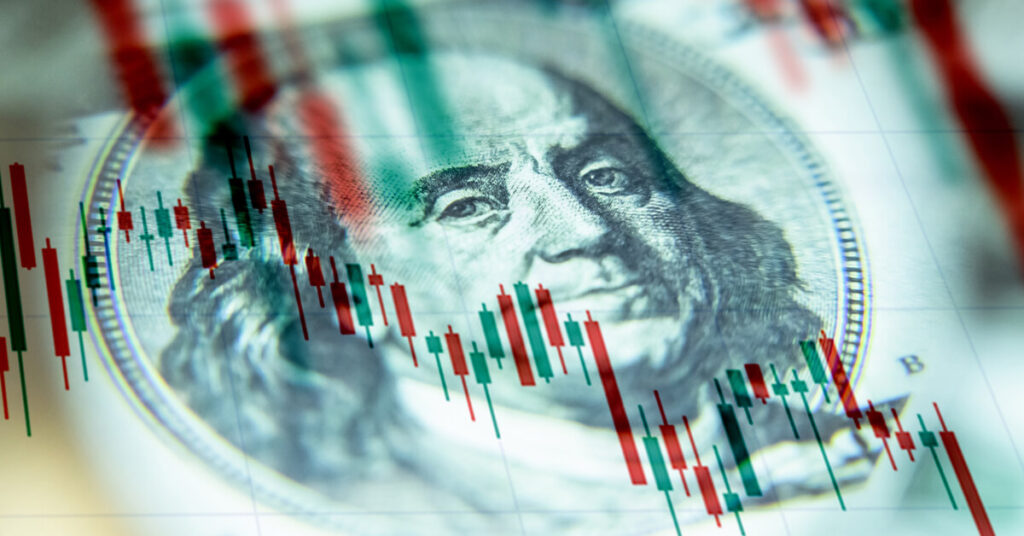
Why the US Dollar is Worth So Much Less Today Than in the Past
A dollar in 1700 was worth approximately 63 times what is today. In 1913, a dollar would have bought you thirty Hershey’s candy bars, whereas today, you could hardly afford one bar with that amount. What drove this plummet in purchasing power? What events accelerated the dollar’s decline, and how can you prevent the money you have in the bank from meeting the same fate?
Let’s examine the key turning points in history that correlated with the greatest fluctuations in the dollar’s value.
1913 – The creation of the Federal Reserve System
New legislation in 1913, namely the Federal Reserve Act, created the Federal Reserve banks and enabled them to adjust money supplies in order to improve economic stability. However, as more dollars were printed and circulated, the prices of goods and services began to rise, resulting in a gradual decrease in the purchasing power of the dollar – or, to put it simply, inflation accelerated.
1929 – The stock market crash
In 1929 the Wall Street Crash wiped out billions of dollars of wealth in one day and led to a global run on US gold deposits. As some 4,000 banks and other lenders ultimately failed, for a time the value of the dollar increased – for those lucky enough to be able to get their hands on their dollars that is.
1933 – The criminalization of gold possession
In 1933, under Franklin Roosevelt’s administration, Roosevelt vowed to end the Great Depression that stemmed from the Wall Street crash of 1929. Roosevelt began to increase money supplies to support low-income US households and re-stimulate the economy. Soon, he realized that he couldn’t print enough money to keep up with the Federal Reserve Act of 1914, which required all Federal Reserve notes to be supported by 40% gold reserves held by the Federal government.
To prevent American citizens from withdrawing gold for hoarding or export, he ordered all banks to cease withdrawals immediately. But this was not sufficient and ultimately, Roosevelt issued Executive Order 6102 under the Trading with the Enemy Act of 1917, which criminalized gold possession to the extent that people could be sentenced to 10 years in prison. Eventually, citizens were forced to hand in their gold (with the exception of jewellery and collectors’ coins) to the Federal Reserve in exchange for cash.

1944 – The Bretton Woods Agreement
In 1944, the USD became the world’s reserve currency – a fiat currency held by foreign central banks to stabilize the value of domestic currency exchange rates and provide liquidity in case of a financial crisis.
At the time, the rate of the USD to gold was fixed at $35/oz. However, as wars were waged, central banks in the US continued to print money, resulting in more inflation and further depreciation of the dollar’s value.
1971 – The abolition of the ‘Gold Standard’
President Richard Nixon put an end to direct dollar-gold conversion in 1971 as the amount of dollars in circulation well exceeded US gold reserves. This finally removed the limit on the amount of dollars that could be printed and circulated.
2008 – The Global Financial Crisis and the beginning of Quantitative Easing (QE1)
Prior to 2008, cheap credit and poor lending standards created a housing bubble. When it popped in 2008, financial institutions had trillions of dollars tied up in subprime mortgages, with millions of US homeowners now stuck with mortgages that exceeded the value of their real estate.
As the Great Recession left millions drowning in debt, banks were bailed out to prevent the US economy from collapsing. This practice became known as quantitative easing (QE), with the first round being coined “QE1”. By June 2010, the Fed’s had purchased a whopping $2.1 trillion of bad debt.
2020 – The Covid-19 pandemic
In the year 2000, there were $4.9 trillion in circulation. Now in 2021, there are $19.5 trillion. This inflation was caused mostly by the 2008 financial crisis but the damage caused by Covid-19 is undeniable. In the year 2020 alone, $3.8 trillion were added to circulation.
Crypto offers a solution
With the dollar’s history of devaluation, its potential to decline further is clear. Cryptocurrencies offer a solution. Bitcoin, among other cryptocurrencies, is protected from the type of devaluation seen in fiat currencies as a result of its fixed supply. As there will only ever be 21 million bitcoin, buying bitcoin today offers a chance to lock away value for tomorrow.
While many are tempted to profit even further by actively trading, simply buying and holding crypto is widely believed to be the safest strategy for new investors.
As always, this article does not constitute financial advice and you should be sure to do your own research and consult a professional financial advisor before making any investment decision.
To stay up to date on all things crypto, like Xcoins on Facebook, follow us on Twitter and LinkedIn and enter your email address at the bottom of the page to subscribe.








